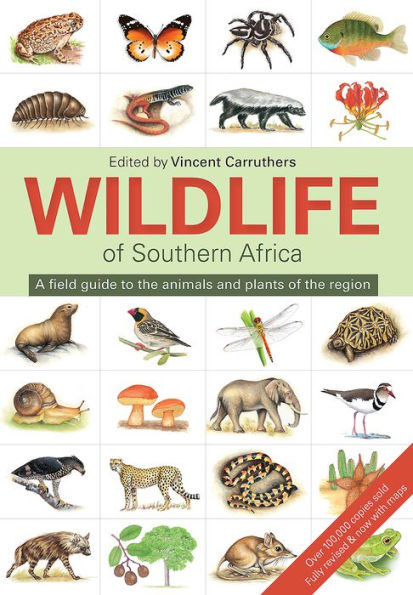Home
Saunders' Field Guide to Gladioli of South Africa
Barnes and Noble
Loading Inventory...
Saunders' Field Guide to Gladioli of South Africa
Current price: $30.95

Barnes and Noble
Saunders' Field Guide to Gladioli of South Africa
Current price: $30.95
Loading Inventory...
Size: Paperback
*Product information may vary - to confirm product availability, pricing, shipping and return information please contact Barnes and Noble
Botanists and seed collectors Rod and Rachel Saunders set out on what seemed to some to be an impossible mission – to find and photograph, in full bloom, all gladioli species found in South Africa and to collect and share their observations in a field guide. They had found all but one species before their untimely deaths at the hands of kidnappers in a forest in KwaZulu-Natal.
In the wake of this tragic event, friends and colleagues collaborated to keep the Saunders’ dream alive. This book is the result their collective efforts.
Gladioli are showy bulbous plants that fall within the Iris family, and the bulk of species are endemic to South Africa. Comprehensive and lavishly illustrated with more than 1,300 photographs, this guide covers the 166 Gladiolus species known to occur in the region.
The book is divided into seven taxonomic sections, according to the species’ distinguishing features. Each species is presented on a double-page spread, with a full plate of color photographs, including close-ups of diagnostic features, different color forms and habitats. Botanical descriptions cover identification (corm, cataphyll, spike, bracts, anthers, pollen, capsules, seeds, and scent), distribution, pollination, conservation status, and notes on ecology and the authors’ personal observations in the field. Distribution maps and flowering periods are given for each species, and tables highlight differences between similar-looking gladioli.
There are almost 300 recognized species, widely distributed across Africa, Europe and the Middle East, with more than half of the species found in southern Africa, making this book useful to botanists world-wide, as well as to horticulturist, propagators, students, gardeners and anyone with an interest in natural history.
In the wake of this tragic event, friends and colleagues collaborated to keep the Saunders’ dream alive. This book is the result their collective efforts.
Gladioli are showy bulbous plants that fall within the Iris family, and the bulk of species are endemic to South Africa. Comprehensive and lavishly illustrated with more than 1,300 photographs, this guide covers the 166 Gladiolus species known to occur in the region.
The book is divided into seven taxonomic sections, according to the species’ distinguishing features. Each species is presented on a double-page spread, with a full plate of color photographs, including close-ups of diagnostic features, different color forms and habitats. Botanical descriptions cover identification (corm, cataphyll, spike, bracts, anthers, pollen, capsules, seeds, and scent), distribution, pollination, conservation status, and notes on ecology and the authors’ personal observations in the field. Distribution maps and flowering periods are given for each species, and tables highlight differences between similar-looking gladioli.
There are almost 300 recognized species, widely distributed across Africa, Europe and the Middle East, with more than half of the species found in southern Africa, making this book useful to botanists world-wide, as well as to horticulturist, propagators, students, gardeners and anyone with an interest in natural history.
Botanists and seed collectors Rod and Rachel Saunders set out on what seemed to some to be an impossible mission – to find and photograph, in full bloom, all gladioli species found in South Africa and to collect and share their observations in a field guide. They had found all but one species before their untimely deaths at the hands of kidnappers in a forest in KwaZulu-Natal.
In the wake of this tragic event, friends and colleagues collaborated to keep the Saunders’ dream alive. This book is the result their collective efforts.
Gladioli are showy bulbous plants that fall within the Iris family, and the bulk of species are endemic to South Africa. Comprehensive and lavishly illustrated with more than 1,300 photographs, this guide covers the 166 Gladiolus species known to occur in the region.
The book is divided into seven taxonomic sections, according to the species’ distinguishing features. Each species is presented on a double-page spread, with a full plate of color photographs, including close-ups of diagnostic features, different color forms and habitats. Botanical descriptions cover identification (corm, cataphyll, spike, bracts, anthers, pollen, capsules, seeds, and scent), distribution, pollination, conservation status, and notes on ecology and the authors’ personal observations in the field. Distribution maps and flowering periods are given for each species, and tables highlight differences between similar-looking gladioli.
There are almost 300 recognized species, widely distributed across Africa, Europe and the Middle East, with more than half of the species found in southern Africa, making this book useful to botanists world-wide, as well as to horticulturist, propagators, students, gardeners and anyone with an interest in natural history.
In the wake of this tragic event, friends and colleagues collaborated to keep the Saunders’ dream alive. This book is the result their collective efforts.
Gladioli are showy bulbous plants that fall within the Iris family, and the bulk of species are endemic to South Africa. Comprehensive and lavishly illustrated with more than 1,300 photographs, this guide covers the 166 Gladiolus species known to occur in the region.
The book is divided into seven taxonomic sections, according to the species’ distinguishing features. Each species is presented on a double-page spread, with a full plate of color photographs, including close-ups of diagnostic features, different color forms and habitats. Botanical descriptions cover identification (corm, cataphyll, spike, bracts, anthers, pollen, capsules, seeds, and scent), distribution, pollination, conservation status, and notes on ecology and the authors’ personal observations in the field. Distribution maps and flowering periods are given for each species, and tables highlight differences between similar-looking gladioli.
There are almost 300 recognized species, widely distributed across Africa, Europe and the Middle East, with more than half of the species found in southern Africa, making this book useful to botanists world-wide, as well as to horticulturist, propagators, students, gardeners and anyone with an interest in natural history.

















